Saudi Arabia Blog
World Cruise, April 2022
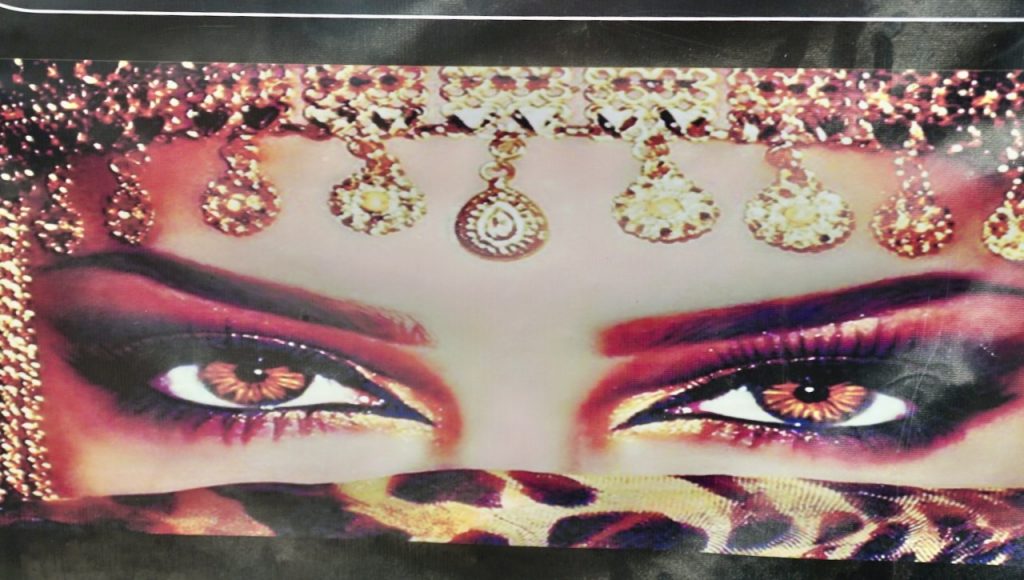
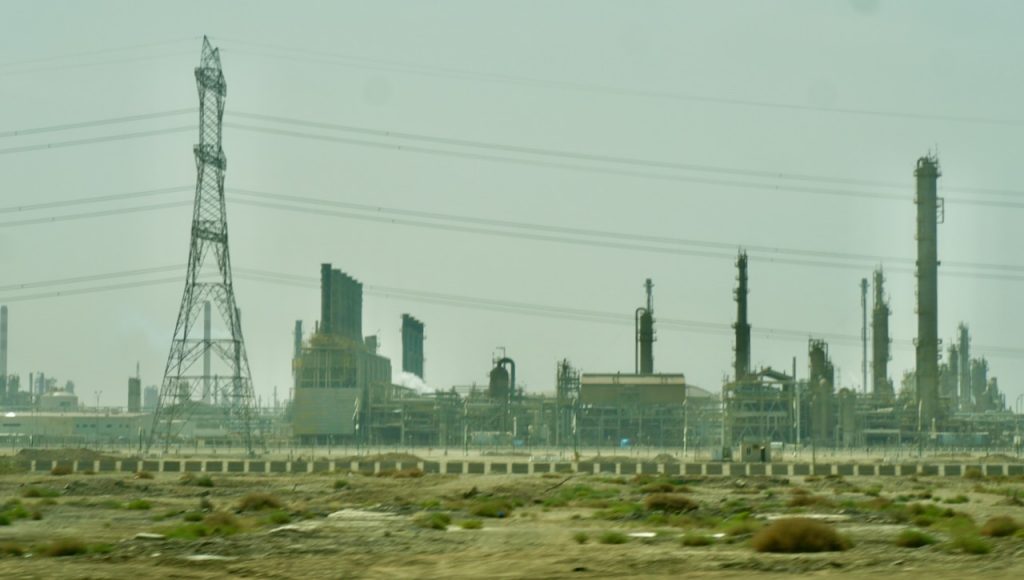
Saudi Arabia was added as a destination when many of the original world cruise destinations were cancelled because of Covid. It is the first time Viking has made a port stop in Saudi Arabia. Extraordinary measures were required by the Saudis for us to visit. The ship was required to lock up all alcoholic beverages in cabinets sealed by customs officials. Alcohol was not allowed to be served anywhere on the ship during our four days in SA waters, including during the overnight sailing from Jeddah to our second port of call, Yanbu al-Bahr. In preparation, all passengers were allowed to stock up on wines to be consumed in our rooms during these four days. As our ship's travel advisor quipped: Don't go out naked on your balcony and scream while waving a wine bottle!
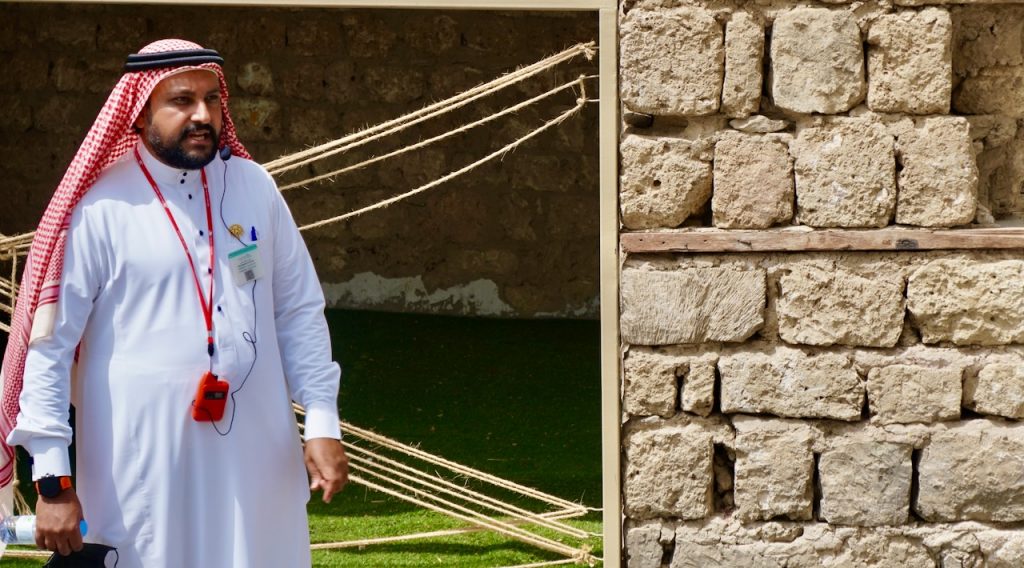
I was informed many years ago not to equate a people with their government. That applies to Saudi Arabia. We’ve met two Arabic-speaking couples who have lived and worked in Saudi Arabia, and they formed strong personal relationships with Saudi citizens. During our two days of tours, the Saudi tour guides were very congenial. But I have also been disturbed by many aspects of Saudi society, specifically, the status of women (e.g. being forbidden to drive), the severe Wahabi Islamic practices, the excesses of Saudi royalty, and most recently, the murder of Saudi dissident journalist Jamal Khashoggi, who was murdered in the Saudi embassy in Turkey when he entered to receive a visa. Investigations by the New York Times concluded that some of the 15 members of the Saudi hit team who committed the murder were closely connected to the crown prince of Saudi Arabia, Mohammed bin Salman.
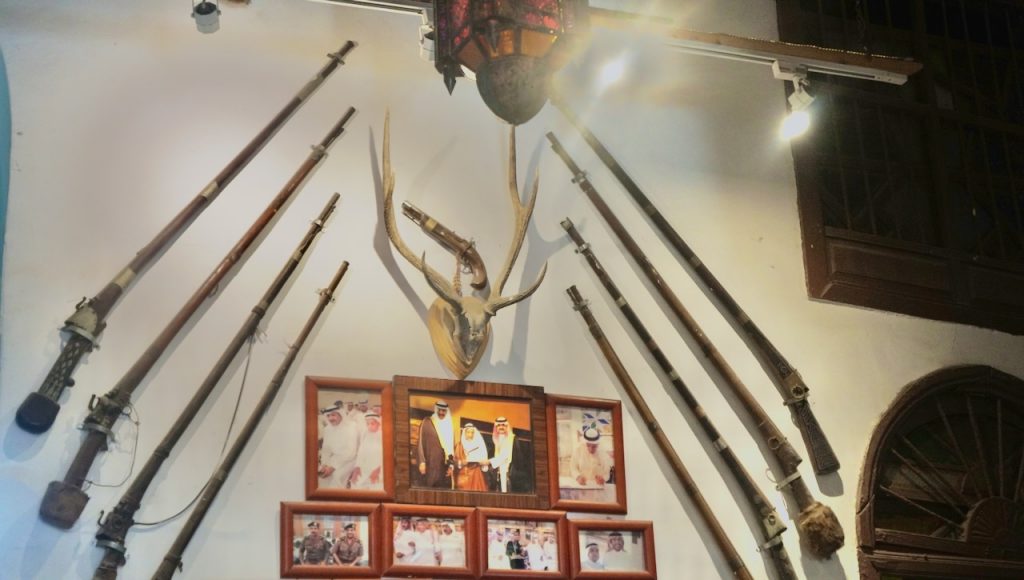
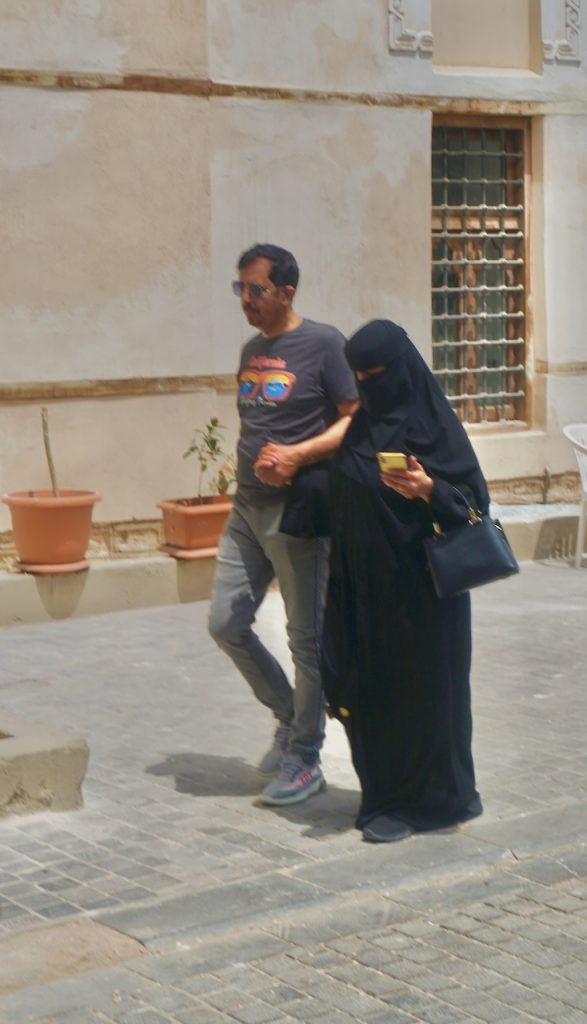
As the first cruise ship to visit Saudi Arabia in several years, passengers received strict instructions as to appropriate apparel. For example, men could not wear shorts. Women’s clothing had to cover their shoulders and knees (and everything in between). Women tourists were not required to wear veils or any head coverings. However, every Saudi women I saw wore black long gowns that included full head coverings, along with veils that covered everything but their eyes. In these covid times, I’ve become much more empathetic to eye contact when wearing a mask. And so I accepted the universal masks worn by Saudi females better than I would have prior to covid. However, the weather was very hot during our visit (30’s C, 90’s F). So I’m sure the traditional black female gowns were uncomfortably hot in this weather.
Our first port of call was Jeddah, Saudi Arabia’s second largest city and largest port. Jeddah is the gateway to Mecca, Islam’s holiest city, and is thus the entry point for millions of foreign Islamic visitors who make the Hajj, the journey to Mecca required at least once in life of all Muslims. Jeddah is mostly a modern city. But our tour focused on the remnants of the Old City of Jeddah that has buildings several hundred years old, constructed in the traditional style using bricks cut from ocean coral. Many of the old buildings are being restored, as well as new buildings being constructed using the ancient materials and designs.
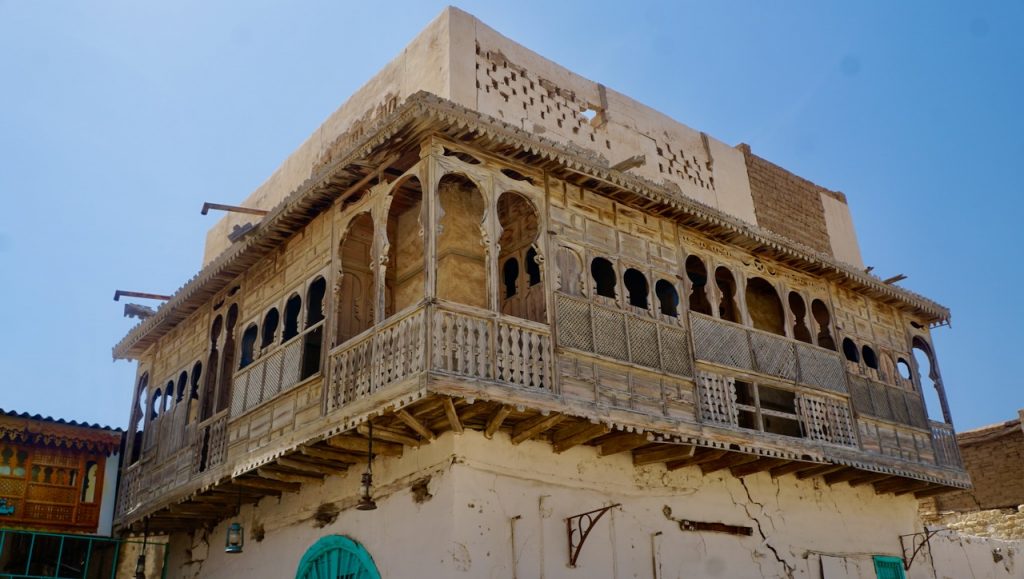
The most notable feature of the old city of Jeddah is a unique wooden window style, which we first saw in Malta. These wooden windows provide ventilation while allowing female residents to look out at the streets below without being seen themselves. This characteristic style was spread by the Ottomans to Saudi Arabia, Malta, Albania, Tunisia, and perhaps other Islamic communities. Jeddah’s old city seeks to promote tourism through the preservation of this traditional architectural feature, which otherwise would disappear since the advent of air conditioning.
Our second Saudi port of call was Yanbu al-Bahr, the second largest port on the Red Sea after Jeddah. Yanbu is important as a shipping point for the Saudi petrochemical industry. It is also the entry point for Islamic visitors to the holy city of Medina. We got the feeling that Yanbu was unprepared to greet tourists. In fact, that observation applies to all of Saudi Arabia, with the exception of the millions of Islamic visitors making the Hajj. Yanbu has some buildings in the old style under restoration.
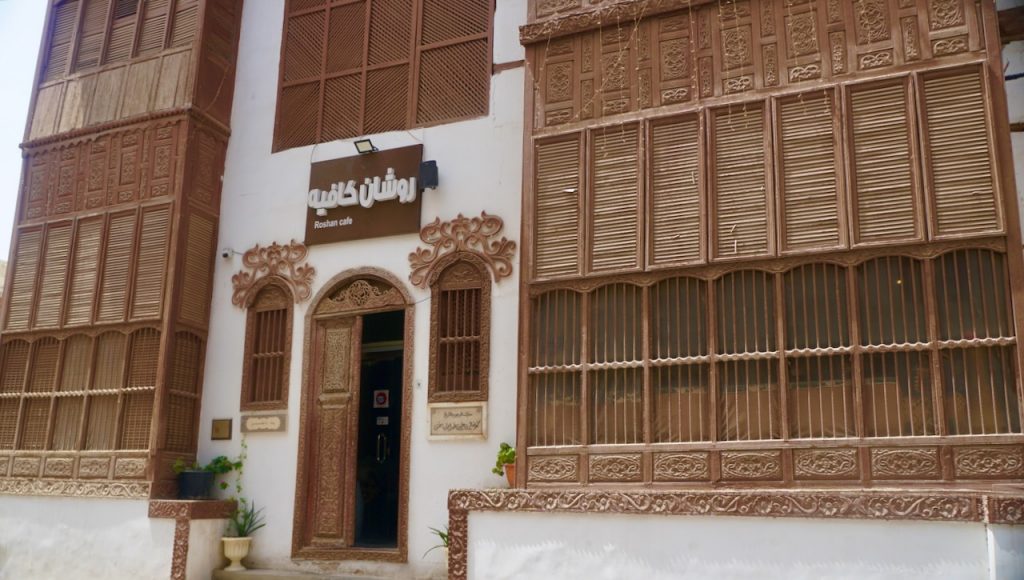
Our bus tour of the Yanbu area included a visit to a huge “park” being developed by the Saudi government. There were large tracts of land with thousands of palm trees planted along paved paths with benches and street lights. This development looked like it could accommodate thousands of visitors. Yet, when we visited it, there were no Saudi visitors at all. It was deserted. The artificial pools were full of green algae. The park was built with a grand design far larger than the local population could support. The Saudi government is rich from its petroleum sales. Thus, huge impractical projects like this park reflect government priorities out of touch with the realities of their people. A similar phenomenon happened in China, where huge high-rise apartment buildings stand empty, constructed through corrupt government business deals that benefited cronies of the politicians.
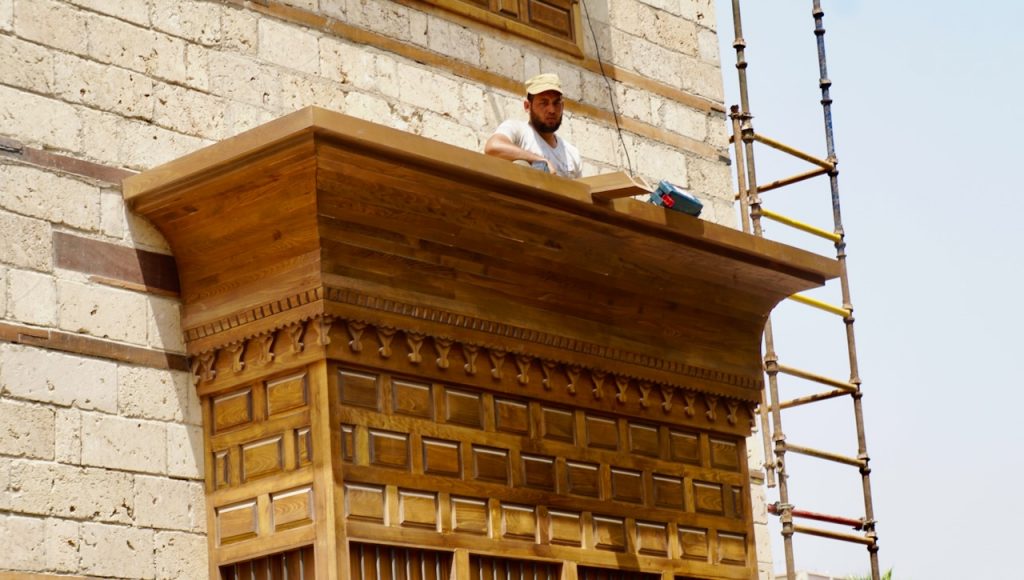
Saudi Arabia has an excess number of royal family members and potential heirs to the leadership. Modern Saudi Arabia was formed in the beginning of the 20th century by tribal leader Abdulaziz bin Abdul Rahman Al Saud, known as Ibn Saud, who ruled from 1902 until his death in 1953. Petroleum was discovered in Saudi Arabia in 1938. Ibn Saud granted substantial authority over Saudi oil fields to American oil companies in 1944. Ibn Saud had twenty-nine wives, another twenty-two consorts, resulting in forty-nine sons and countless daughters. This gave rise to rivalries as to who would succeed Ibn Saud. Ibn Saud chose his second son, bin Saud, over his oldest son Faisal. Per Wikipedia, bin Saud had 108 children with multiple wives.
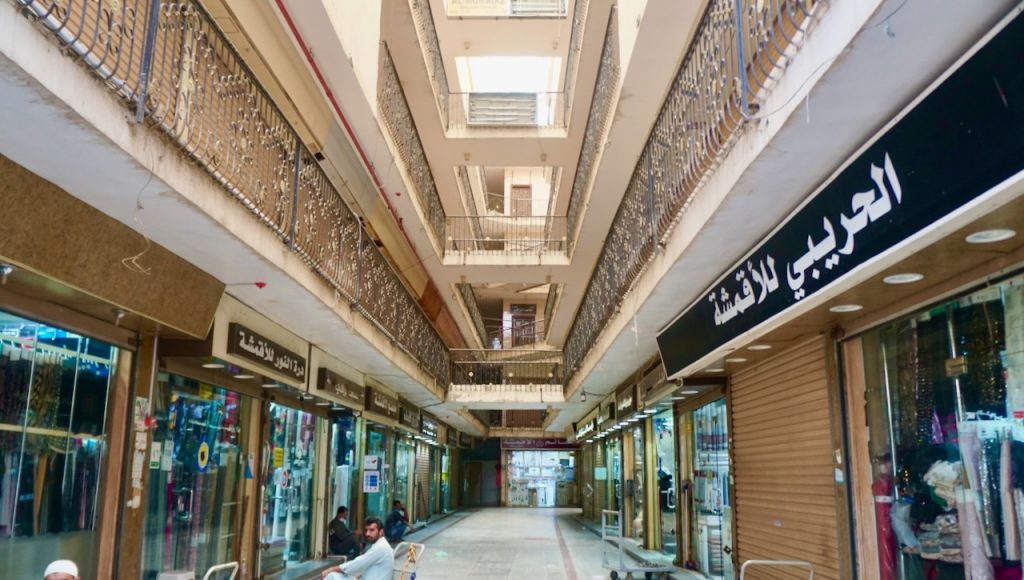
Faisal later forced his brother from office to become king. King Faisal outlawed slavery in Saudi Arabia in 1962. Faisal caused the oil crisis of 1973 to punish the nations that supported Israel in the 1973 Arab-Israeli war. Faisal was assassinated by a nephew in 1975. The complications of royal succession continue in the present day, when there are over two thousand heirs to the legacy of the Saudi dynasty’s original patriarchs.
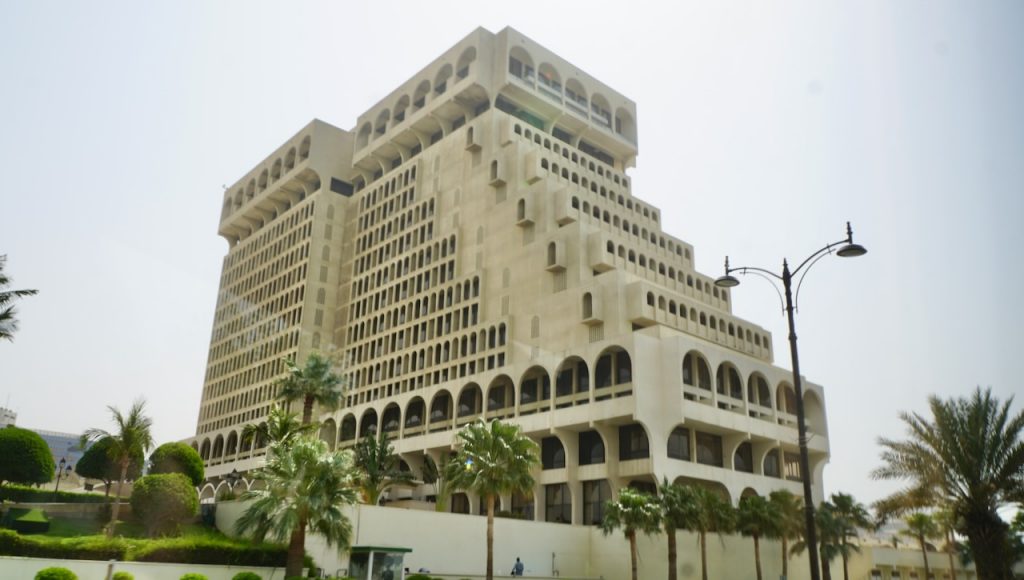
From Wikipedia: “Mohamed bin Salman is the seventh son of King Salman bin Abdulaziz and the eldest of six sons born to King Salman's third wife. Mohammed bin Salman controls his father's government and is considered the de facto ruler of Saudi Arabia. Bin Salman rules an authoritarian regime. There are no democratic institutions in Saudi Arabia, and elements of repression are still evident. Human rights activists, women's rights activists, journalists, former insiders, and dissidents are systematically repressed through tactics including torture, jailing, and killings, and bin Salman is said to use a group of assassins known as the Tiger Squad to carry out extrajudicial killings. He was personally linked to the assassination of Jamal Khashoggi, a Washington Post columnist who had criticized the Saudi government.”
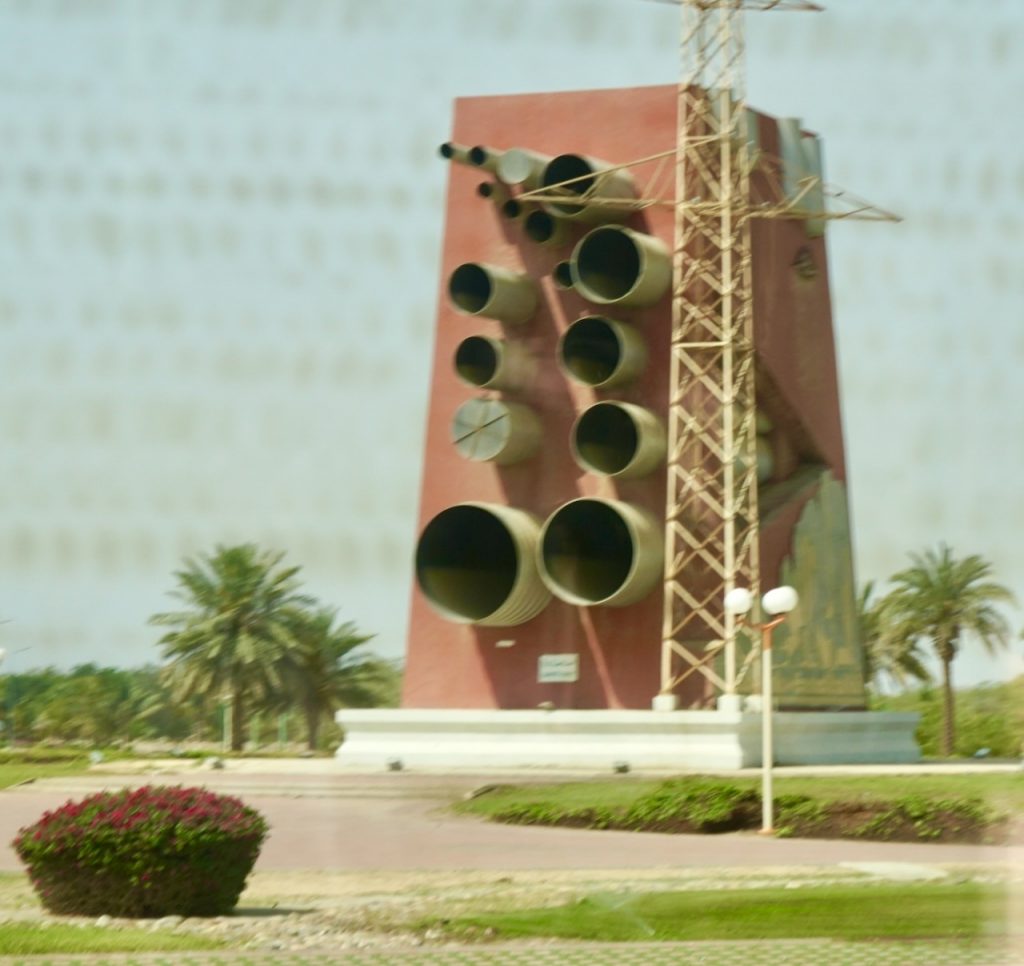
In conclusion, my feelings remain mixed about this rich but troubled country. It is home to the world’s largest petroleum reserves (after Venezuela). It has a young well-educated population who are aware that the strictures of Wahabi Islam and the authoritarian government are holding them back from their full potential. Saudi Arabia could become a great destination for tourists at some point in the future. They just aren’t there yet.
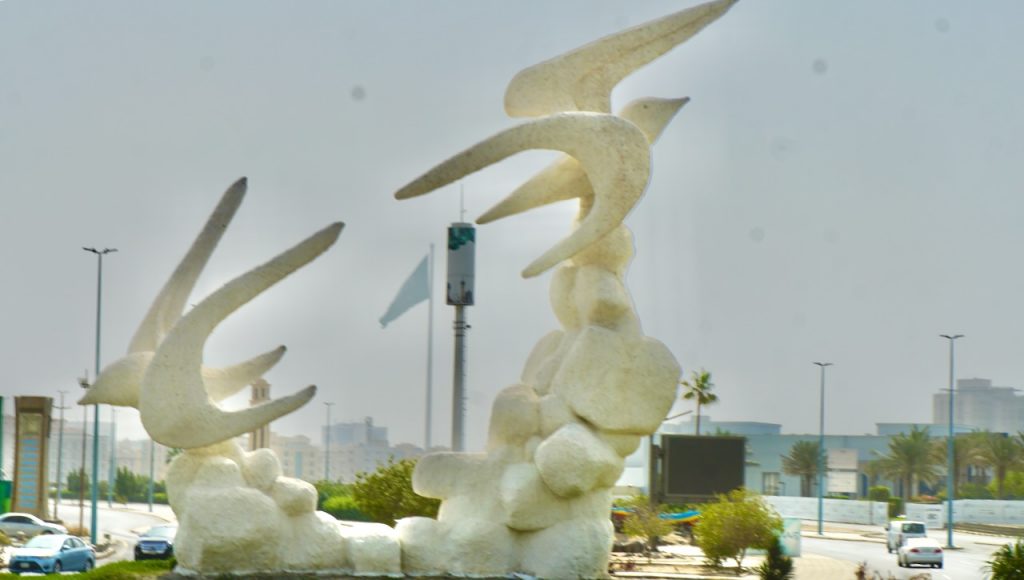
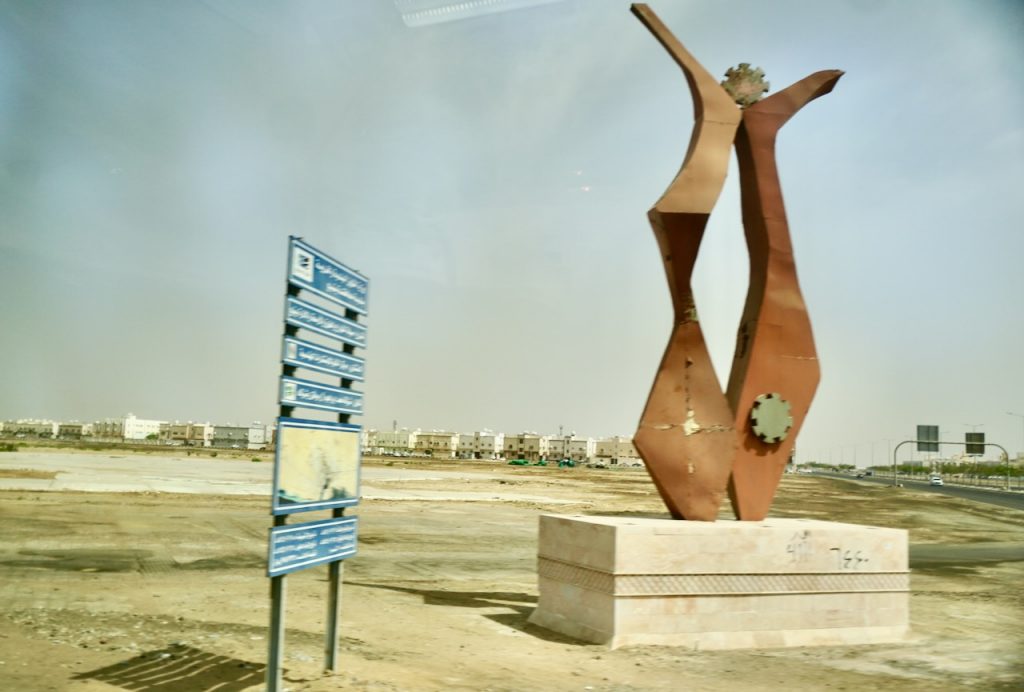
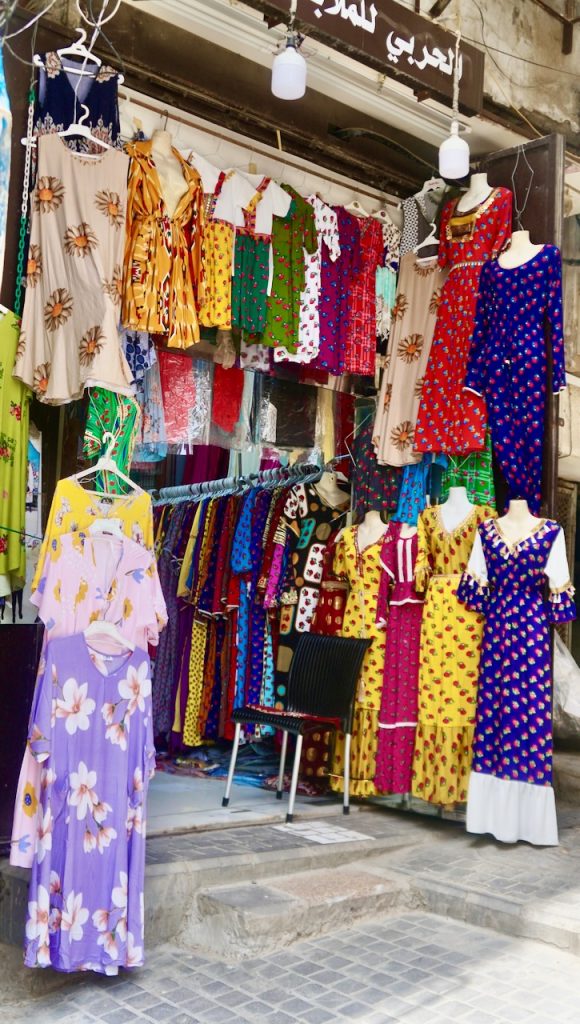
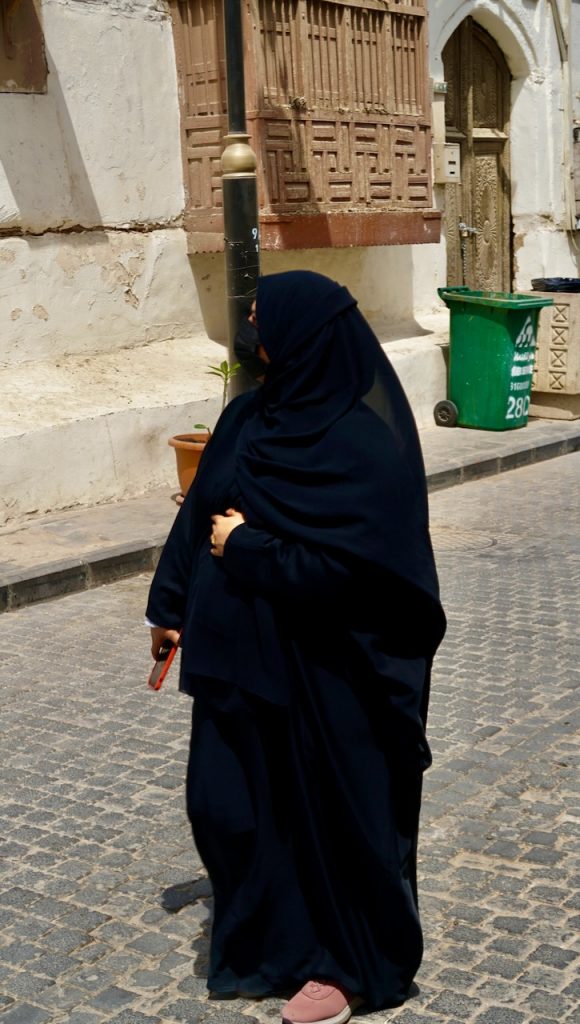
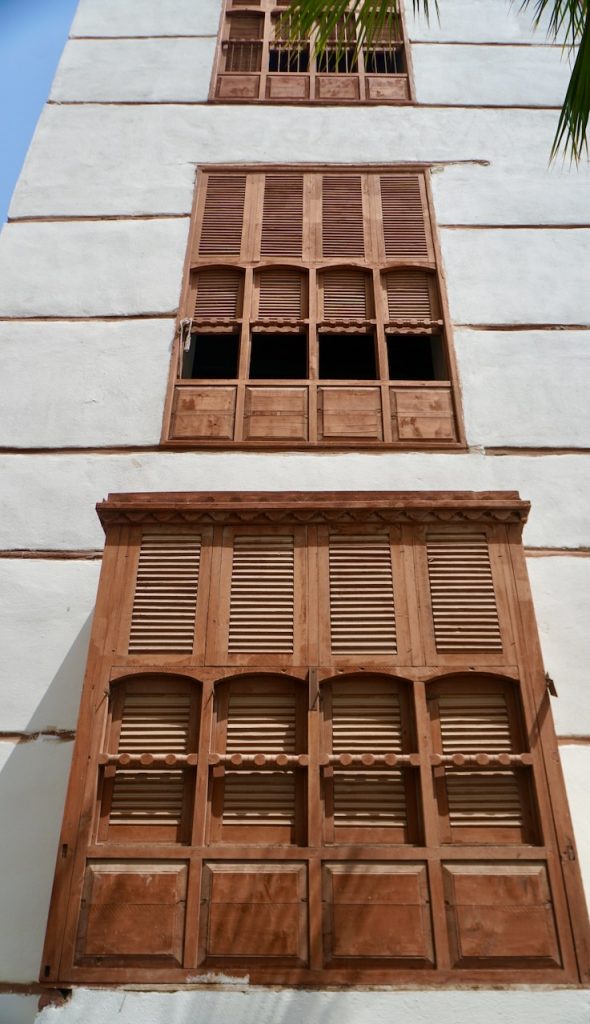
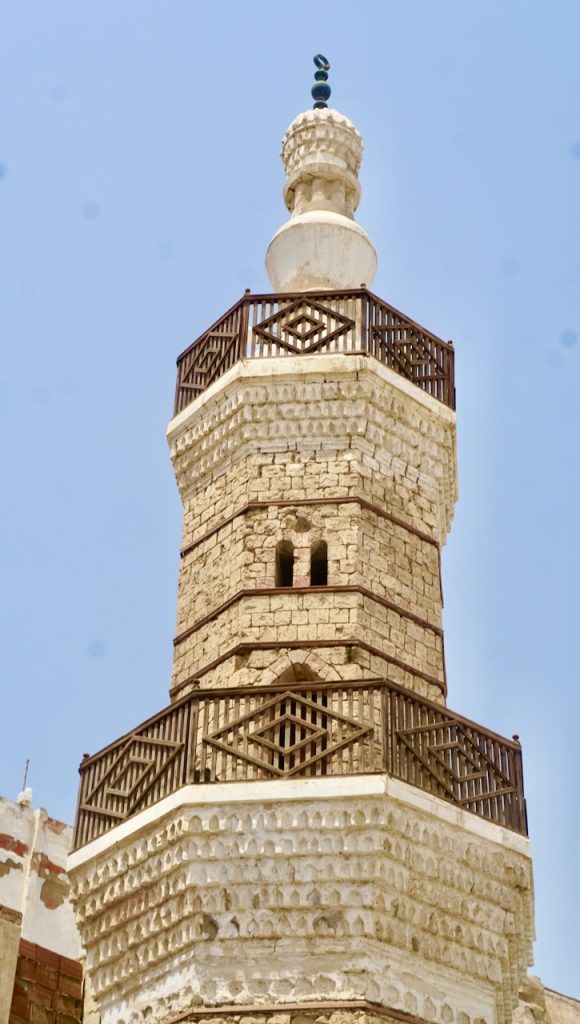
2 Comments on Saudi Arabia Blog
Join the Conversation